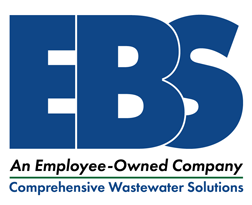
There are times when manufacturing plants do not run smoothly. Day-to-day problems occur that can negatively impact the performance of the WWTP, making it difficult to meet permit limits. A common problem, particularly for aerated stabilization basins (ASBs), is oxygen (O2) deficiency.
Oxygen deficiency can arise for a variety of reasons, such as a power outage, aerators being down for maintenance, scavenging of O2 by chemical compounds containing sulfur, or upstream production spills that increase organic loading to the WWTP. Under oxygen deficient conditions, O2 supply may not meet O2 demand, putting Biochemical Oxygen Demand (BOD) permit limits at risk of being violated. When this occurs, it is up to the environmental staff responsible for overseeing the WWTP to respond quickly with a solution to ensure that permit limits can be met. One solution available is the application of a nitrate salt in liquid form such as calcium nitrate (EBS CN-9).
If O2 is available, the bacteria will use it as a terminal electron acceptor since it provides the most energy. During oxygen deficient conditions, bacteria are forced to find a new terminal electron acceptor so that BOD removal can continue. After O2, the second most energetically favorable terminal electron acceptor for bacteria to use is nitrate (NO3-). This is why the application of CN-9 provides a cost-effective solution to an oxygen deficiency problem to ensure that BOD removal continues at an adequate rate.
EBS CN-9 is shipped from several locations around the country. Our network of shipping facilities reduces delivery lead time to get your system working at optimum levels sooner rather than later, thus reducing your risk and environmental impact.
